
Not Women’s Work
/ Главная / Russkiy Mir Foundation / Publications / Not Women’s WorkNot Women’s Work
Marina Bogdanova
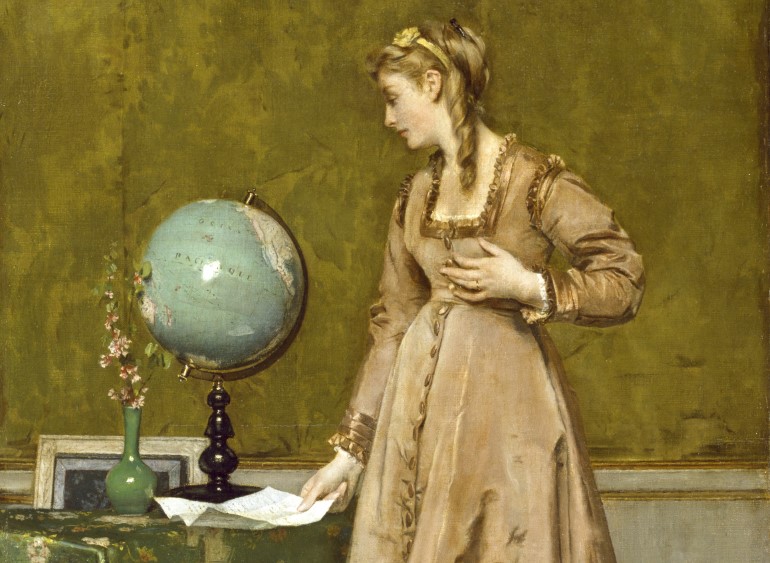
One often hears it said about one thing or another: “that isn’t women’s work.” Nonetheless, even in patriarchal prerevolutionary Russia there lived women who were not stopped by the incomprehension of those close to them, by society’s disapproval, or by the impossibility of receiving a good education and pursuing their beloved undertaking in a conventional way.
Women at War
The most famous female Russian warrior is, of course, Nadezhda Andreevna Durova (1783-1866), a hero of the War of 1812. Director Eldar Ryazanov made the wonderful comedy The Hussar Ballad, based in part on her biography, and Nadezhda Durova became very widely known as a result. The real Durova’s life was quite different from this theatrical tale about Shurochka Azarova. This woman was fated to know both fame and the bitterness of being forgotten.
A very talented writer who conversed with Pushkin, she described her life (with certain omissions) in The Calvary Maiden. As the daughter of a Hussar captain, Nadezhda Durova was raised from infancy by her father’s orderly, and it’s not surprising that this young woman knew how to shoot and ride a horse better than she knew how to sew and dance waltzes.
Family life didn’t bring Nadezhda happiness. She left her husband and infant son and returned to her parents, and then a little later fled from her parents’ house with her lover—the captain of a Cossack regiment. Later transferring into an Uhlan regiment (since Cossacks were obligated to have beards), “the landowner’s son Alexander Sokolov” (as she now called herself) served faithfully and honorably, showing courage in battle and even receiving the Cross of St. George and a promotion to the rank of non-commissioned officer.
Her family managed to find her (one time before going to battle Nadezhda had written a letter of apology to her father), and the unmasked runaway was escorted to meet the Emperor in person. If this had happened during the reign of Nicholas I, Durova’s fate would have been decided: she would have been sent home immediately. But the romantic Alexander I unexpectedly took Durova’s side and sent her to serve as a second lieutenant in a Hussar regiment. He also gave his supreme permission for her to be called Alexander Andreevich Alexandrov from this day forward as a sign of his personal protection.
In the coming years, this heroic woman commanded a half-squadron, was an aide-de-camp of Mikhail Kutuzov (who was aware of her secret), took part in a series of military operations, and in 1816 she was already able to retire with the rank of first lieutenant (the 10th class in the Table of Ranks) with a corresponding pension.
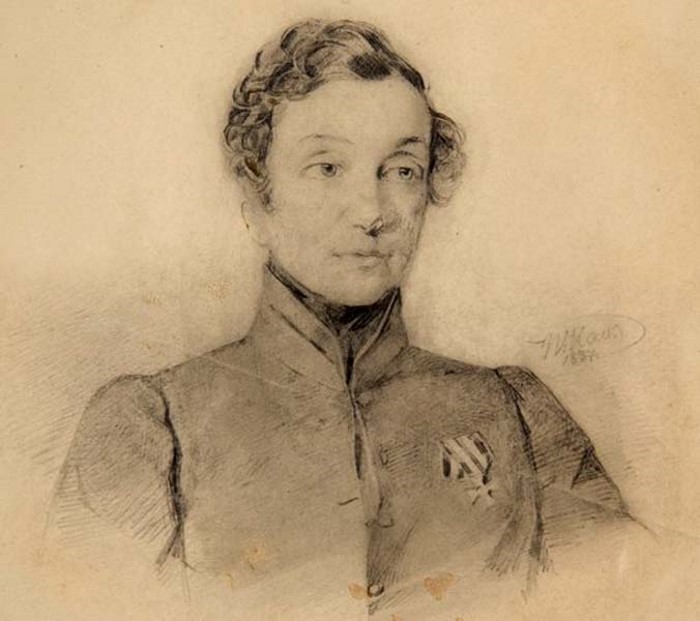
Nadezhda Durova
At first, Durova enjoyed popularity in high society, but society gradually cooled to her, as Durova continued to go around in men’s clothing and speak about herself using masculine grammar, while also refusing to respond to anyone who didn’t address her as Alexander Andreevich. She died in Yelabuga at the age of 82, asking to be laid to rest as Alexandrov. But the priest disdained the will of the deceased and buried her as God’s servant Nadezhda.
This cavalry maiden was not the first Russian woman officer. In 1785, when Nadezhda was only two years old, the Cossack Tatyana Mironovna Markina faked her own drowning to flee from the Don Cossack village of Nagavskaya. Dressing in men’s clothes, she joined a regiment of musketeers under the name of Kurtochkin. After being wounded while participating in the Russo-Turkish War, Kurtochkin was promoted to an officer’s rank and earned the title of captain.
Kurtochkin was considered an outstanding musketeer and expert in service—so it was quite unexpected when he became the subject of a criminal case. Kurtochkin was accused of rape and breaking a marriage agreement. Under the threat of being decommissioned and sent to Siberia, Markina had to open up to the Empress. Catherine the Great had herself dressed up in men’s clothing more than once and expressed the opinion that it would have been good to be born a man and a warrior. She took an interest in Markina-Kurtochkin’s affairs. After an investigation and medical examination Kurtochkin was fully acquitted, but his military career also came to an end. When the retired military captain Tatyana Markina returned to her native village, she was received as a hero. Markina enjoyed continual respect from her neighbors and even represented the village as a deputy when the Cossack’s interests were infringed upon.
There were other similar occurrences. Lieutenant of the guard Alexander Tikhomirov spent more than 15 years in the ranks, and it was only after their courageous comrade had perished in battle that his fellow soldiers found out that for all this time they had been serving with Shura Tikhomirova, the sister of the long-deceased lieutenant Alexander.
Rimma Mikhailovna Ivanova (1894-1915), a participant in the First World War, went to the front in 1915 as the “volunteer Ivan Mikhailov Ivanov,” but the deception was quickly discovered and…this young woman had to serve under her own name as a nurse. Rimma Ivanova died in battle, when she led several injured soldiers on an attack—as a result of which these soldiers managed to reach their own ranks. Posthumously, she became the only woman to be awarded with the military order of Saint George, fourth class, presented for courage in battle. A street in her home city of Stavropol has been named in honor of Rimma Ivanova.
In 2015 the film Battalion appeared on Russia’s screens, and its protagonist was Maria Leontevna Bochkareva (1887-1920), a holder of the St. George Cross and the founder of the famous women’s death brigades. In July 1917, Colonel V.I. Zakrzhevsky gave a report characterizing the “Russian Valkyries” thus: “Bochkareva’s regiment conducted themselves heroically in battle, always on the frontline, serving on equal footing with the male soldiers. When the Germans attacked, the regiment launched themselves on the counterattack as one; they carried ammunition, went on scouting and spying missions; through their work the death brigade provided an example of courage, bravery, and equanimity; they raised the spirit of the soldiers and showed that each of these women heroes is worthy of being called a warrior in the Russian Revolutionary Army.”
Women Explorers
We have already written about the first female Russian polar explorer, Tatyana Fedorovna Pronchishcheva (1710(?)-1735). But this courageous young woman, who went with her husband on an expedition from which neither would return, was not the only Russian female explorer.
In 1886 the Geographic Society awarded a medal to Alexandra Viktorovna Potanina (1843-1893), née Lavrskaya. With her husband, she traveled through wild and difficult to reach regions in Mongolia, Tuva, and China—and this was in those years when traveling even through civilized countries was not the easiest thing to do.

Alexandra Potanina
If Rimma Ivanova and Nadezhda Durova wanted to choose a military career since childhood, Alexandra Viktorovna didn’t even think about this. This shy and sickly daughter of a Nizhny Novgorod priest got married at an old age by nineteenth-century standards (30) to an impractical eccentric, who was also a convict. But her husband was a member of the Geographical Society, and an influential member, Pyotr Semyonov-Tyan-Shansky, became a guardian angel to the Potanins, convincing the government that Mr. Potanin would be an ideal candidate to participate in a planned expedition to Mongolia.
To take part in the expedition, Alexandra Viktorovna brushed up on her English and French, took classes in drawing (the team needed an artist), and listened to a series of lectures on history and ethnography. Potanina turned out to be an indispensible member of the team: conversing with Mongol and Chinese women, she was able to find out details about their daily routines, customs, and family lives that they would not have revealed to a strange man.
During her second expedition, in Tuva, Potanina met local shamans, gathered unique survey material, and even made translations of several shamanic songs. Moreover, she drew local flora, fauna, insects, exotic objects, decorations, and ritual patterns. She also performed logistical duties on the expedition, prepared food, and washed laundry. She endured the more than Spartan conditions of the campaign without complaint, even when it was hard to breathe in the tent at night due to the volume of mosquitoes and there was not enough water to drink.
Alexandra Potanina completed three expeditions with her husband. Preparations for their fourth expedition—across Kyakhta to Tibet—were proceeding at full steam when doctors strongly advised Alexandra Potanina to stay home this time. But she decided to take the risk on her husband’s account. Her heart didn’t withstand the trip. After her second stroke Potanina was paralyzed, and on 19 September 1893 this brave explorer, the first Russian woman ethnologist, passed away. Grigory Nikolayevich lived 27 years longer than his wife. In 1896 in Irkutsk, where the Potanins had often lived, a public library was opened in A.V. Potanina’s name—so the people of Irkutsk honored the memory of a favorite citizen.
One cannot leave out one other courageous woman: Olga Aleksandrovna Fedchenko (1845-1921), a botanist and artist who made four expeditions in Turkestan along with her husband, A. P. Fedchenko. After her husband’s tragic death in Montblanc, Olga Fedchenko took to editing and preparing for print materials from their expeditions in Turkestan; she also wrote and translated articles for the Geographical Society. Altogether she published more than 60 scholarly articles. And her Acclimatized Garden at the Olgino estate near the town of Mozhaysk became famous far beyond the borders of Russia. There, Olga Fedchenko worked for over 25 years on cultivating plants characteristic of Turkestan in the conditions of a moderate climate. She received orders for seeds from all over the world.
Women Scholars
For quite a long time, women’s education was limited to the gymnasium at best, and talk of higher education for women in Russia began only with the reforms of Alexander II, when the decision was made to organize higher pedagogic and medical courses for women.
In Russia there was not even a possibility of training women to be astronomers, mathematicians, biologists, or chemists. They would have to go abroad, where they could graduate from European universities. Of course, their diplomas would have to be confirmed in Russia—even if they came from the Sorbonne, Göttingen, or another renowned university.
The pride of Russia, the first woman in the world to be a full professor in mathematics, Sofia Vasilevna Kovalevskaya (née Korvin-Krukovskaya, 1850-1891), was educated in Germany and taught in Stockholm. And although Kovalevskaya was accepted into the Moscow Mathematics Society as a lecturer and would later be selected as an associate member of the physics and mathematics division of the Russian Academy of Science, she did not teach in her homeland: there she could have been offered, at most, the position of mathematics teacher at a women’s gymnasium. What’s more, when associate member Kovalevskaya wanted to take part in meetings, she was denied for the reason that the presence of women at such meetings was “not part of the Academy’s tradition.”
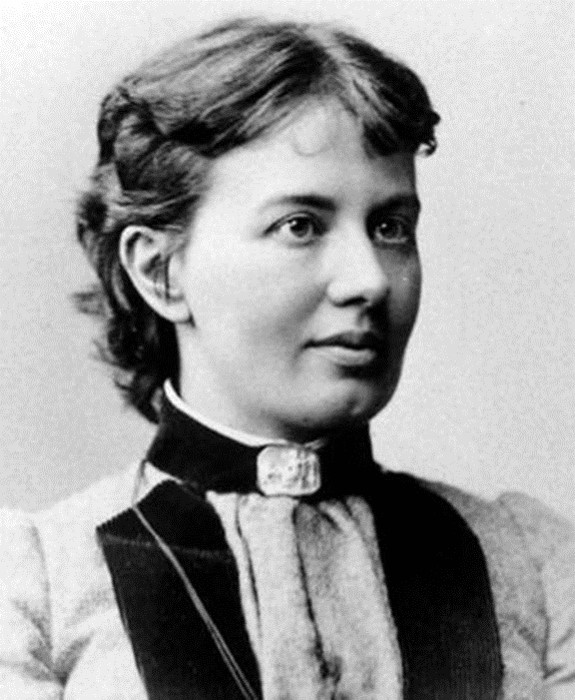
Sofia Kovalevskaya
In 1862 a tiny group of female auditors (only three!) were accepted to the Saint Petersburg Academy of Surgical Medicine, today’s S.M. Kirov Military Medical Academy. Professors Sechenov and Botkin joyfully met these young women who had decided to dedicate themselves to medicine. One of them, Nadezhda Prokofevna Suslova (1843-1918), soon after published her first scholarly work. She distinguished herself so strikingly that when the Russian Emperor banned women from receiving diplomas in 1863, both professors helped this talented young woman leave for Europe and gave her recommendations.
Even abroad there were not very many women who had decided to study medicinal surgery at this time. Suslova attended theoretical and practical classes while working in an anatomical theater alongside other young people, and in 1867 she defended her dissertation to receive a diploma as a doctor of medicine, surgery, and obstetrics. Her adviser was I.M. Sechenov.
After returning to Russia, she was required to defend her dissertation once again and to confirm her diploma by again passing examines. She did this—and then she lived for a long time in Nizhny Novgorod where she and her husband, the histologist A. Golubev, had a large practice. Suslova wrote scholarly works and enjoyed influence over the fellow citizens of her city, as well as well-deserved respect from Russian medics. N. Suslova died in Alushta, having left her instruments and medical library to local centers of healing.
The first woman doctor to receive her education in Russia was Varvara Aleksandrovna Kashevarova-Rudneva (1841-1899). Her fate bore witness to this hero of emancipation’s stunning strength of spirit—and simultaneously testified to the terrible resistance on the part society and the government that this woman had to overcome in order not to bury her talents in the earth.
She could not go abroad, as it was too expensive. After facing very difficult trials in her life, Kashevarova was sent from the Orenburg region to study at the Obstetric Institute (since Muslim women couldn’t accept the help of male doctors). For her achievements in learning, they wanted to give her a considerable sum of money, but Kashevarova requested a different prize: to give her the opportunity to receive higher medical education.
Despite the formal ban on allowing women into institutions of higher education, an exception was made after the personal petitioning of the governor of Orenburg, and Kashevarova was enrolled in the Academy of Medicinal Surgery (whose doors had been open to N. Suslova) on a fellowship as an auditor. She completed her studies with a gold medal and defended her dissertation—despite continually facing open and hidden opposition from her “colleagues.”
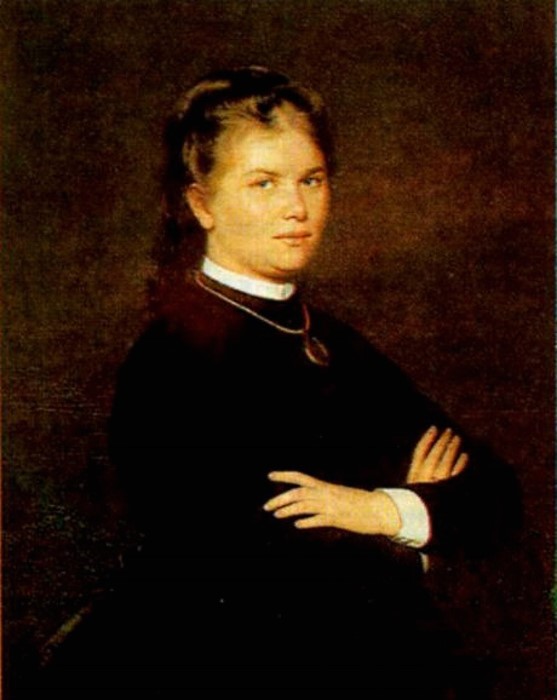
Varvara Kashevarova-Rudneva
Articles were written about her abroad, but in Russia people pretended she didn’t exist. The Orenburg region, which had paid Kashevarova’s scholarship, declined to officially accept this diploma-holding specialist for work in the military hospital, since the administration didn’t want to set a precedent. Her husband, Professor Rudnev, would be accused at one moment of stealing his wife’s ideas, and then at another moment, people would allege the opposite—that Kashevarova-Rudneva wasn’t much of a scholar and merely her husband’s protégée. Kashevarova-Rudneva was not accepted as an instructor for women’s medical courses. During the Russo-Turkish War of 1877 she wasn’t accepted into the army as a doctor. Meanwhile, she enjoyed widespread respect in the West, and her scholarly works were published there. Her book The Hygiene of the Woman’s Body at all Phases of Life was cited in practically all guides to obstetrics, while its author spent the last years of her life freezing in anonymity and poverty.
Unfortunately, this story did not have a happy ending. After a filthy newspaper scandal, Kashevarova, who was a widow at the time, was forced to move from Petersburg out to the countryside, where she opened a private practice for peasants, and she died from a serious heart condition at the age of 58.
And nonetheless, it’s hard to stop progress. The first Russian woman professor was Ekaterina Fedorovna Kovalevskaya (née Vinogradova, 1874-1958). Interestingly, it’s no accident that she shared a last name with Sofia Kovalevskaya: their husbands belonged to the same family.
Ekaterina Kovalevskaya received a doctorate from the University of Bern and returned to Russia. Several decades passed, and—due in part to her renowned predecessors, the Russian women scholars who had “broken through”—Kovalevskaya received work as a laboratory assistant in the department of physiological chemistry at the Women’s Medical Institute. In January 1912, a vote was conducted at a council meeting affirming Kovalevskaya as a lecturer in the department of physiological chemistry. This was a triumph: a woman professor was giving a course in research methods in physics and chemistry at the Women’s Medical Institute, and she practiced medicine and showed students through her very existence that they would no longer have to choose between science and their homeland. And in 1915 the medievalist, paleographer, and doctorate from the University of Paris Olga Antonovna Dobiash-Rozhdestvenskaya successfully began teaching. In 1918, for her study The Cult of Saint Michael in the Latin Middle Ages she received the title doctor of general history—making her the first Russian woman to receive this title. She also set another outstanding precedent: The scholarly works of Dobiash-Rozhdestvenskaya are considered fundamental to Russian medieval studies.
Women and Technology
There is a traditional view that women and technological progress are two incompatible notions. Meanwhile, the people who say this forget that the author of the first computer program was Ada Lovelace. Lydia Vissarionovna Zvereva (1890-1916) was the first female Russian pilot, or “aviatrix” as they said back then. In 1911 she received diploma № 31 upon graduating the Gamayun aviation school. Lydia also met her future husband there. All of Russia delighted in this “flying pair”—aviators enjoyed the same respect then as astronauts do now. Later, the couple opened their own flight school, as well as a shop for working on airplanes. During the First World War their business was refitted as an airplane factory. Lydia Zvereva died of typhus, and airplanes circled the cemetery during her funeral.
Another graduate of Gamayun (and the fifth Russian aviatrix) was Elena Pavlovna Samsonova (1890-1958), who was not only a pilot but also a driver in the military. She received her driving diploma in Warsaw, but she was unable to work in the profession of driver during peacetime: a woman driver met rejection everywhere. She went off to the First World War as a nurse in a Warsaw hospital, but it very quickly became clear that there was much more need for drives at the front, and Elena was immediately able to find work as a driver for the ninth army. During the Provisional Government, when women were allowed to join the army, Samsonova served in the 26th airborne squadron and conducted a series of flights. (At the time, airplanes were used primarily for spying and mapping territory.) Information about Samsonova’s later life is scarce. (It’s clear that keeping a low profile was necessary for her to live a long life as the daughter of tsarist military engineer under Stalin.) After the end of the Civil War, Elena Pavlovna lived in Sochi and…worked as gym teacher. Most likely, the students of Sochi had no idea that a living legend was teaching them to do summersaults and climb rope.
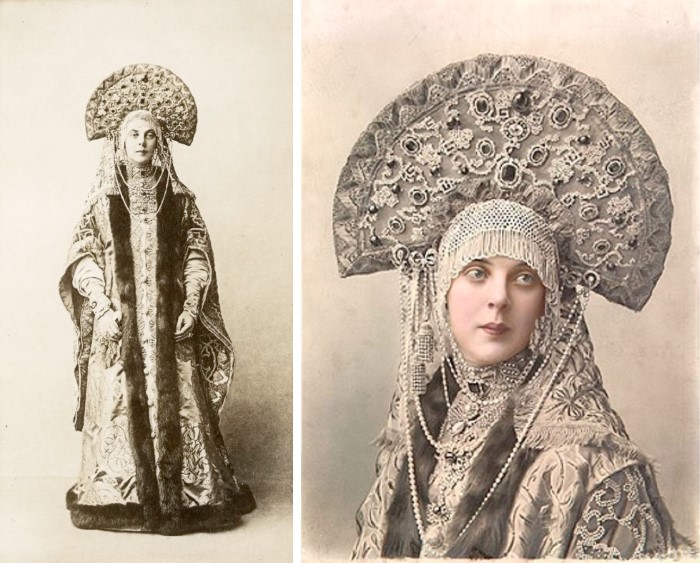
Portrait of Countess M.E. Orlova-Davydova, 1903. Photographed by E.L. Mrozovskaya
Elena Lukinichna Mrozovskaya (died in 1941) didn’t fly in fragile planes or drive in an “auto.” But it is thanks to her that we have excellent photographs of Nikolai Rimsky-Korsakov, Mathilde Kschessinska, Vera Komissarzhevskaya, and outstanding photographs of the conservatory. Mrozovskaya was not merely a photographer, but a true genius of the photographic craft. Her 1903 photograph of Princess Olga Orlova wearing a headdress at a ball is kept by Hermitage Museum as an object of great value. “Light painting,” as photography was called at the time, became analogous to real painting in Elena Mrozovskaya’s hands; it transformed into high art.
Today no one is surprised by a young female student who drives a car, travels alone, and takes photographs. All of this is normal. But a hundred or so years ago, everything was quite different.
New publications

 Mikhail Kalatozov, a director who transformed the world of cinematography in many ways, was born 120 years ago. He was a Soviet film official and a propagandist. Above all, he was capable of producing movies that struck viewers with their power and poetic language.
Mikhail Kalatozov, a director who transformed the world of cinematography in many ways, was born 120 years ago. He was a Soviet film official and a propagandist. Above all, he was capable of producing movies that struck viewers with their power and poetic language.  Ukrainian authorities have launched a persecution campaign against the canonical Ukrainian Orthodox Church (UOC), the biggest one in the country's modern history. Over the past year, state sanctions were imposed on clergy representatives, searches were conducted in churches, clergymen were arrested, criminal cases were initiated, the activity of the UOC was banned in various regions of the country, and monasteries and churches were seized.
Ukrainian authorities have launched a persecution campaign against the canonical Ukrainian Orthodox Church (UOC), the biggest one in the country's modern history. Over the past year, state sanctions were imposed on clergy representatives, searches were conducted in churches, clergymen were arrested, criminal cases were initiated, the activity of the UOC was banned in various regions of the country, and monasteries and churches were seized.  When Nektary Kotlyaroff, a fourth-generation Russian Australian and founder of the Russian Orthodox Choir in Sydney, first visited Russia, the first person he spoke to was a cab driver at the airport. Having heard that Nektariy's ancestors left Russia more than 100 years ago, the driver was astonished, "How come you haven't forgotten the Russian language?" Nektary Kotlyaroff repeated his answer in an interview with the Russkiy Mir. His affinity to the Orthodox Church (many of his ancestors and relatives were priests) and the traditions of a large Russian family brought from Russia helped him to preserve the Russian language.
When Nektary Kotlyaroff, a fourth-generation Russian Australian and founder of the Russian Orthodox Choir in Sydney, first visited Russia, the first person he spoke to was a cab driver at the airport. Having heard that Nektariy's ancestors left Russia more than 100 years ago, the driver was astonished, "How come you haven't forgotten the Russian language?" Nektary Kotlyaroff repeated his answer in an interview with the Russkiy Mir. His affinity to the Orthodox Church (many of his ancestors and relatives were priests) and the traditions of a large Russian family brought from Russia helped him to preserve the Russian language.

 The leaders of the Friends of the Great Russia cultural association (Amici Della Grande Russia) in Italy believe that the Western policy of abolishing Russian culture in Europe has finally failed. Furthermore, it was doomed to failure from the beginning.
The leaders of the Friends of the Great Russia cultural association (Amici Della Grande Russia) in Italy believe that the Western policy of abolishing Russian culture in Europe has finally failed. Furthermore, it was doomed to failure from the beginning.  Name of Vladimir Nemirovich-Danchenko is inscribed in the history of Russian theater along with Konstantin Stanislavski, the other founding father of the Moscow Art Theater. Nevertheless, Mr. Nemirovich-Danchenko was a renowned writer, playwright, and theater teacher even before their famous meeting in the Slavic Bazaar restaurant. Furthermore, it was Mr. Nemirovich-Danchenko who came up with the idea of establishing a new "people's" theater believing that the theater could become a "department of public education."
Name of Vladimir Nemirovich-Danchenko is inscribed in the history of Russian theater along with Konstantin Stanislavski, the other founding father of the Moscow Art Theater. Nevertheless, Mr. Nemirovich-Danchenko was a renowned writer, playwright, and theater teacher even before their famous meeting in the Slavic Bazaar restaurant. Furthermore, it was Mr. Nemirovich-Danchenko who came up with the idea of establishing a new "people's" theater believing that the theater could become a "department of public education."  "Russia is a thing of which the intellect cannot conceive..." by Fyodor Tyutchev are famous among Russians at least. December marks the 220th anniversary of the poet's birth. Yet, he never considered poetry to be his life's mission and was preoccupied with matters of a global scale. Mr.Tyutchev fought his war focusing on relations between Russia and the West, the origins of mutual misunderstanding, and the origins of Russophobia. When you read his works today, it feels as though he saw things coming in a crystal ball...
"Russia is a thing of which the intellect cannot conceive..." by Fyodor Tyutchev are famous among Russians at least. December marks the 220th anniversary of the poet's birth. Yet, he never considered poetry to be his life's mission and was preoccupied with matters of a global scale. Mr.Tyutchev fought his war focusing on relations between Russia and the West, the origins of mutual misunderstanding, and the origins of Russophobia. When you read his works today, it feels as though he saw things coming in a crystal ball...